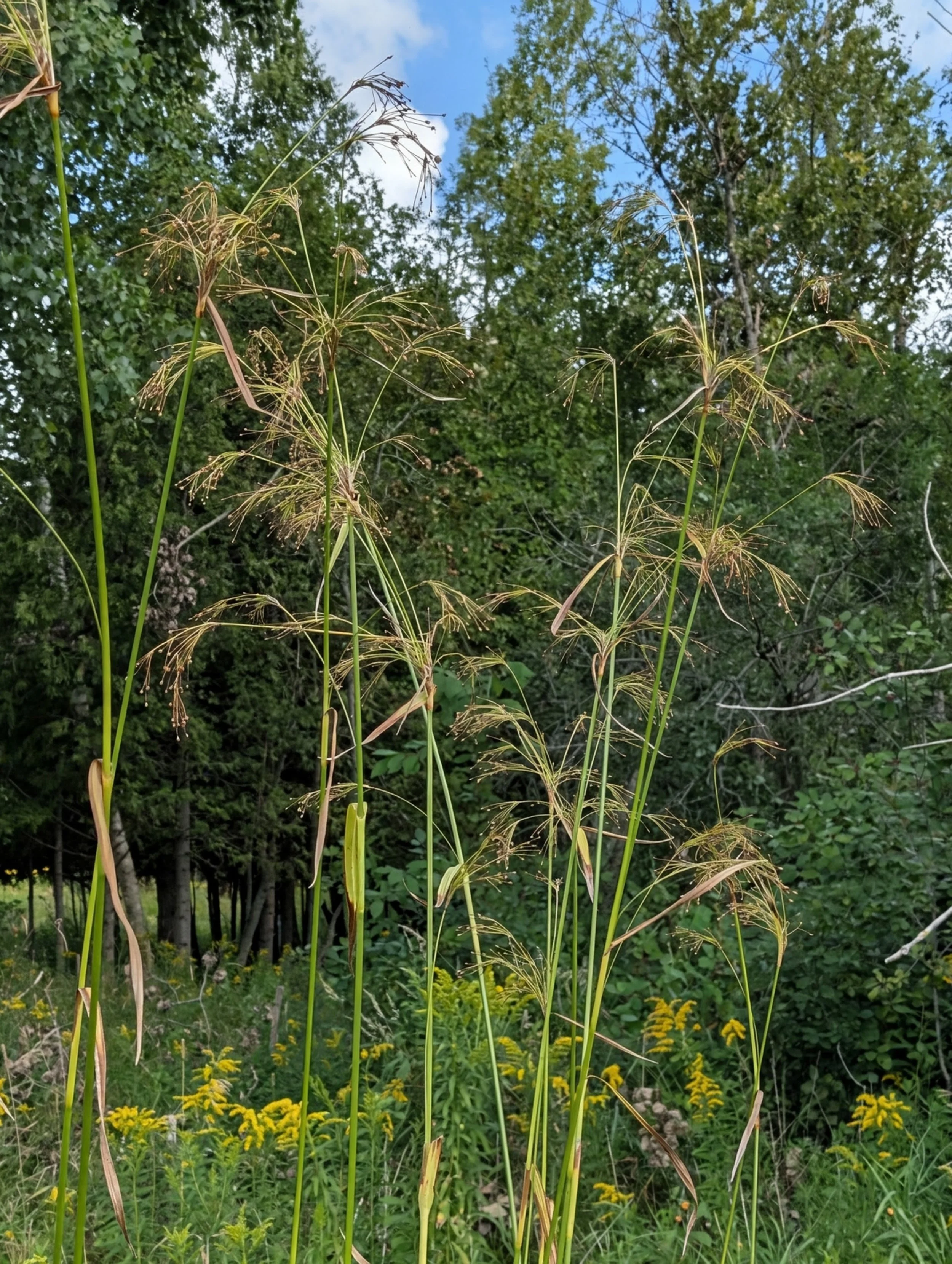Bloom: summer
Habitats: abandoned fields; limestone glades; low areas along rivers and ponds; marshes and seeps; moist depressions in limestone glades; moist meadows in wooded areas; powerline clearances in wooded areas; river-bottom prairies; roadside ditches; sedge meadows; wet dolomite prairies
Lifespan: perennial
Moisture: wet to mesic
Plant type (height): sedge (2 to 3.5 feet)
Requirements: full sun to light shade
Soil: soil with organic matter
